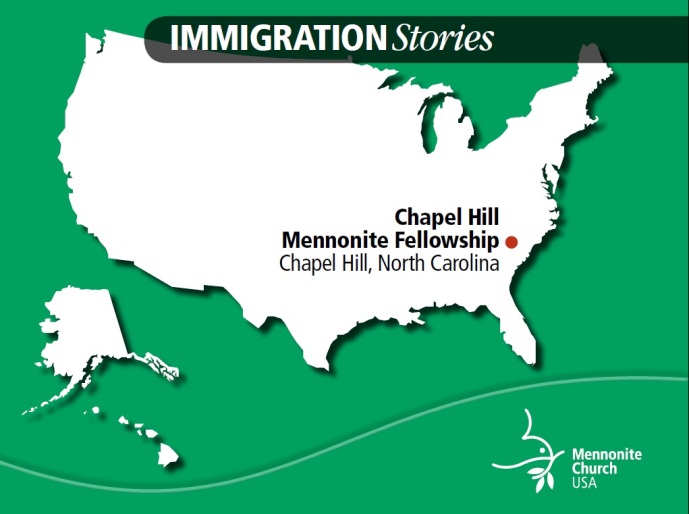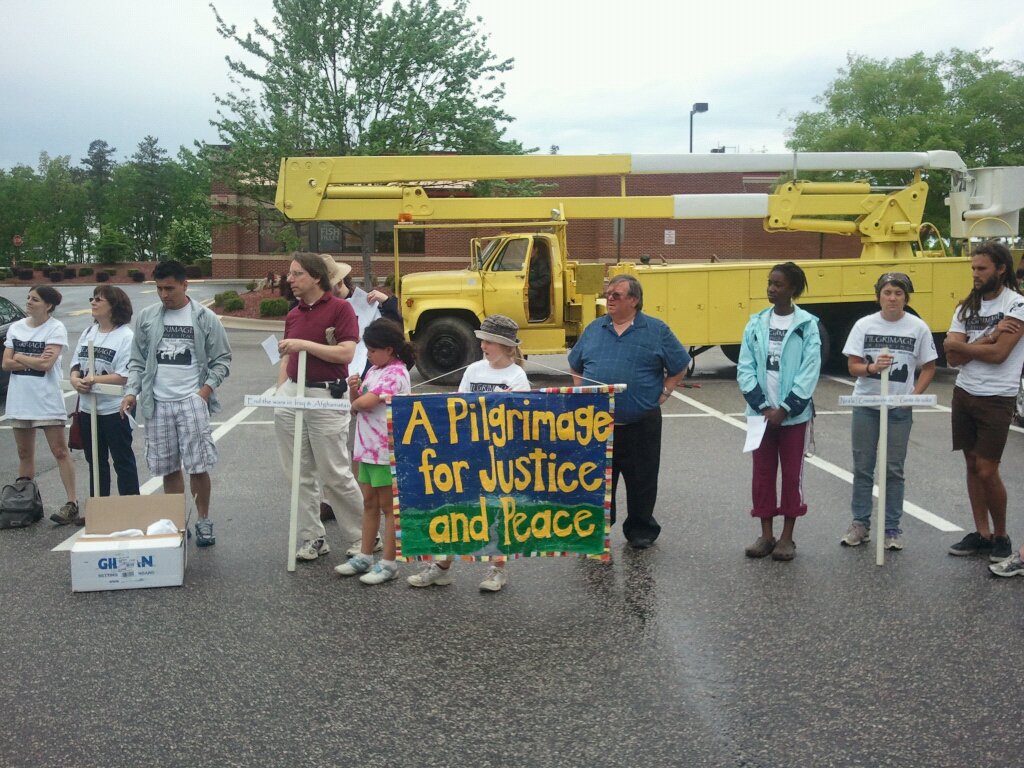The revised 2014 Churchwide Immigration Statement for Mennonite Church USA recommends five actions to congregations for 2014–2016. Each of the actions below is illustrated by an example of ministry already happening in Mennonite Church USA.
Educational
1. Learn skills to help facilitate intercultural competency and/or undoing racism processes in congregations through the Communities of Hope process
Invite a Communities of Hope facilitator to work with your congregation.
2. Plan Bible studies, sermons, and worship services on themes of hospitality to immigrants.
Learn about the footwashing vigil hosted by Chapel Hill (N.C.) Mennonite Fellowship during Holy Week.

“For the past four years, we have held a footwashing vigil outside an Immigration and Customs Enforcement detention center. Every Thursday morning of Holy Week, a few of us from our Mennonite community gather with Roman Catholics, Episcopals, Presbyterians, Baptists and Quakers, among other Christians. We worship and beg. Together we pray words from the Mennonite hymnal: ‘Liberating God,’ we say, ‘Let your will be done; let those who mourn be comforted and those in bondage be set free.’”
Ministry
3. Advocate for just and humane immigration policies for immigrants and refugees by contacting our local, state and national elected officials.
Follow in the footsteps of New Bridges Immigrant Resource Center in Harrisonburg, Va.
New Bridges Immigrant Resource Center was started in 2000 by a group of Mennonite congregations in Harrisonburg, Va. The Resource Center was key to the organization of a vigil on Sunday, May 19, 2013, in which more than 200 people walked around Congressman Bob Goodlatte’s office in Harrisonburg. Goodlatte serves Virginia’s Sixth Congressional District in the House of Representatives and is an influential immigration legislator. The vigil was led by a number of Hispanic pastors in the Harrisonburg community. Those attending the vigil prayed for Goodlatte as well as the future of immigration in the United States
4. Offer church facilities and volunteers for documentation services, language classes, mental health support, cultural celebrations, after-school homework help and other ministries.
Consider the example of Brazo en Brazo in Lima and Allen County, Ohio.
Brazo en Brazo (Arm in Arm) is a coalition of five Mennonite congregations reaching out to the Spanish-speaking population in Lima and Allen County, Ohio. In 2013, steps were taken to establish the ministry as a partner organization with the Ohio Conference of Mennonite Church USA. Brazo en Brazo advocates for education, health, immigration justice and other social concerns that arise for Spanish-speaking families and individuals.
5. Engage in mutual aid to offer food, shelter, clothing, housing, transportation and other resources to immigrants regardless of their status.
Learn about the experience of Church for Others in Temple City, Calif., a congregation made up of Korean immigrants.
“Our congregation does not have a program to help with immigration reform or to find ways to help immigrant people, since we ourselves are an immigrant community and every day we seek to survive. There are lots of challenges, but at the same time, there is joy in our journey! Being a Korean-Mennonite church, we try to be an alternative church community and a model for many Korean Christians who are deeply disappointed with typical Korean churches.”
Gain insight from Iglesia El Centro, the first Spanish-speaking congregation in Mountain States Mennonite Conference in 50 years.
“Most of our members are undocumented immigrants. We are a vibrant community committed to following Jesus’ example of service. We offer communal meals, creative leadership, education initiatives for women and men, and salsa lessons.”
To learn more about these stories, and many others in Mennonite Church USA, check out our four Immigration Stories slideshows, in Spanish and English:


